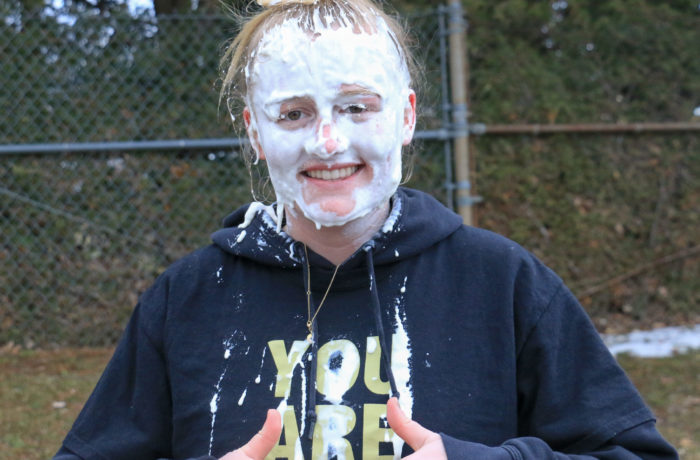
As the number of high school graduates in the United States plateaus over the next decade and then drops off precipitously in 2027, St. Michael’s, like many small private schools in the northeast, is making plans on how to adjust.
“The northeast is experiencing what I think a lot of the country is going to be tasting in the mid 2020’s,” said Nathan Grawe, professor of economics at Carleton College and author of
Demographics and The Demand for Higher Education. “I hope that institutions having an 18 year head start on what’s coming will make changes so that they are able to handle the change that comes,” Grawe said.
Many small, private schools that are largely tuition dependent are at risk because the majority of the students they enroll come from the northeast where the number of high school graduates is dwindling. St. Michael’s, which draws largely from
Massachusetts, is no exception.
“Declining demographics have been on our radar for five to seven years,” said Vice President of Finance, Rob Robinson, noting that the school has strategically aimed to embrace the dwindling amount of high school students.
Five years ago board trustee chair Michael McGrath, told a reporter for Inside Higher Ed, “It’s really dumb if you don’t prepare for a storm.”
The demographics projection has allowed St. Michael’s and many other institutions to prepare for enrollment decline. “We know what the birth rates are, you know and we have an 18 year lead time on that,” said Director of Admissions Michael Stefanowicz.
“We have tried to address the declining enrollment while minimizing the impact on the student experience. We haven’t’ cut any major programs, we haven’t cut any major offerings,” Robinson said.
Robinson noted that with fewer students the college can’t operate the same way it did in the past. “There are fewer employees today than their were a few years ago,” said Robinson.
Maintaining a cohort of 510 students remains the goal of the college. “It takes hard work, but we are leaving no stone unturned,” said President Lorraine Sterritt.
“At 510 new students every fall I think St. Michael’s can maintain our existing structure in general and offer all of the things that we self identify as creating a St. Michael’s experience. If we have sustained new enrollment at less than 510 than we need to continue to look at how to reduce expenses,” Robinson said.
Robinson acknowledged that while cutting expenses has proven beneficial for the college, it is not sustainable. “Since 2015 our total net student revenue has declined nine million dollars. We simply can’t cut expenses fast enough to keep a pace with that decline in revenue,” Robinson said.
The admissions office has increased recruiting efforts by employing a larger staff. “From the time that I started as the director of admission we’ve been able to add three territory manager admission counselor positions,” Stefanowicz said.
Both are positioned in strategic areas of recruitment for the college – Washington D.C. and Worcester, Mass.
“We can’t put all of our eggs in the Massachusetts basket, and we don’t,” said Stefanowicz. Despite the state’s projected loss of 5,000 students by 2030, the college continues to draw an estimated two-thirds to three-quarters of its students from Massachusetts.
Each of the 14 admissions staff members are assigned a geographic area to recruit from. “This is really where you want to diversify where students are coming from,” said Stefanowicz.
The college has been very successful at enrolling students who visit campus. “If we can get somebody to come visit campus as an admitted student we have a better than 50% shot of them enrolling at St. Mike’s, Stefanowicz said.
In addition to recruiting new students, ensuring they stay has also been a major focus for the college. Efforts include a retention committee and even a student of concern portal button faculty and staff can activate if they feel a student is likely to
leave the college.
“St. Mike’s has always had a really relatively high retention compared to our peer schools,” said Assistant Dean and Registrar David Barrowclough, noting the 86-87 percent retention rate is roughly 10 percent higher than the national average.
Higher Education consultants argue that many schools need to do more. “What worked in the past is no longer going to work in the future because worldwide and in the United States things have changed so much,” said Marguerite Dennis, executive director of higher education consultancy firm MJ Dennis Consultants.
Dennis stressed that colleges need to look at other demographics of potential candidates. “The pie hasn’t gotten smaller. The old pie has gotten smaller. The pie is actually bigger, but people aren’t looking at the big pie, they’re looking at what was,” said Dennis, referring to the traditional white male and female 18-year-old high school graduate as the old pie.
“There are so many different ways to do this, but if you look with the same old eyes at the big problem, you’re never going to solve it in my opinion,” Dennis said.
Robinson stressed that current students can be very influential in recruiting new candidates. “I guess I want to the students to understand that this isn’t something they are detached from this is something they can be actively involved in,” Robinson said.
“St. Mike’s depends a lot on our tradition and what we stand for, but as president Sterritt has said many times, we are a little too humble about that. We need to be out there telling people more vocally. The time to be quiet is definitely not now,” said Barrowclough.


